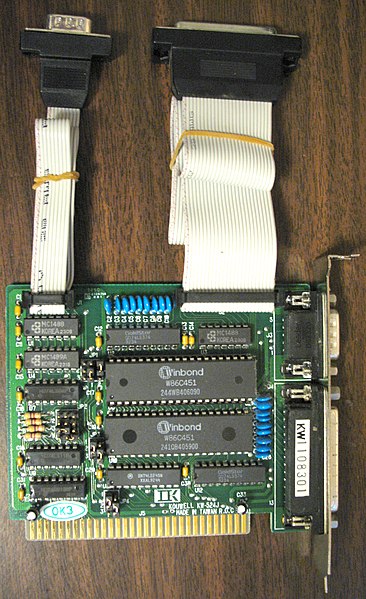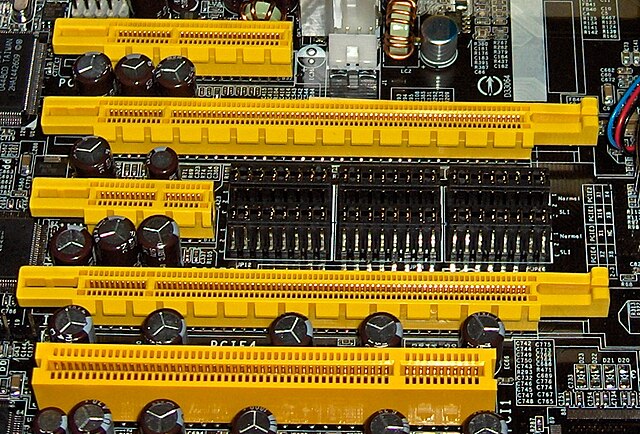In computing, a plug and play (PnP) device or computer bus is one with a specification that facilitates the recognition of a hardware component in a system without the need for physical device configuration or user intervention in resolving resource conflicts. The term "plug and play" has since been expanded to a wide variety of applications to which the same lack of user setup applies.
A third-party serial interface card for the Apple II that required cutting and soldering to reconfigure. The user would cut the wire traces between the thinly connected ⧓ triangles at X1 and X3 and solder across the unconnected ◀▶ pads at X2 and X4 located at the center of the card. Once done, reverting the modification was more difficult.
A NuBus expansion card without jumpers or DIP switches
An MCA expansion card without jumpers or DIP switches
An example of an ISA interface card with extremely limited interrupt selection options, a common problem on PC ISA interfaces. Kouwell KW-524J dual serial, dual parallel port, 8-bit ISA, manufactured in 1992: * Serial 1: IRQ 3/4/9 * Serial 2: IRQ 3/4/9 * Parallel 1: IRQ 5/7 * Parallel 2: IRQ 5/7 (There is no technical reason why 3,4,5,7,9 cannot all be selectable choices for each port.)
In computer architecture, a bus is a communication system that transfers data between components inside a computer, or between computers. This expression covers all related hardware components and software, including communication protocols.
Four PCI Express bus card slots (from top to second from bottom: ×4, ×16, ×1 and ×16), compared to a 32-bit conventional PCI bus card slot (very bottom)





